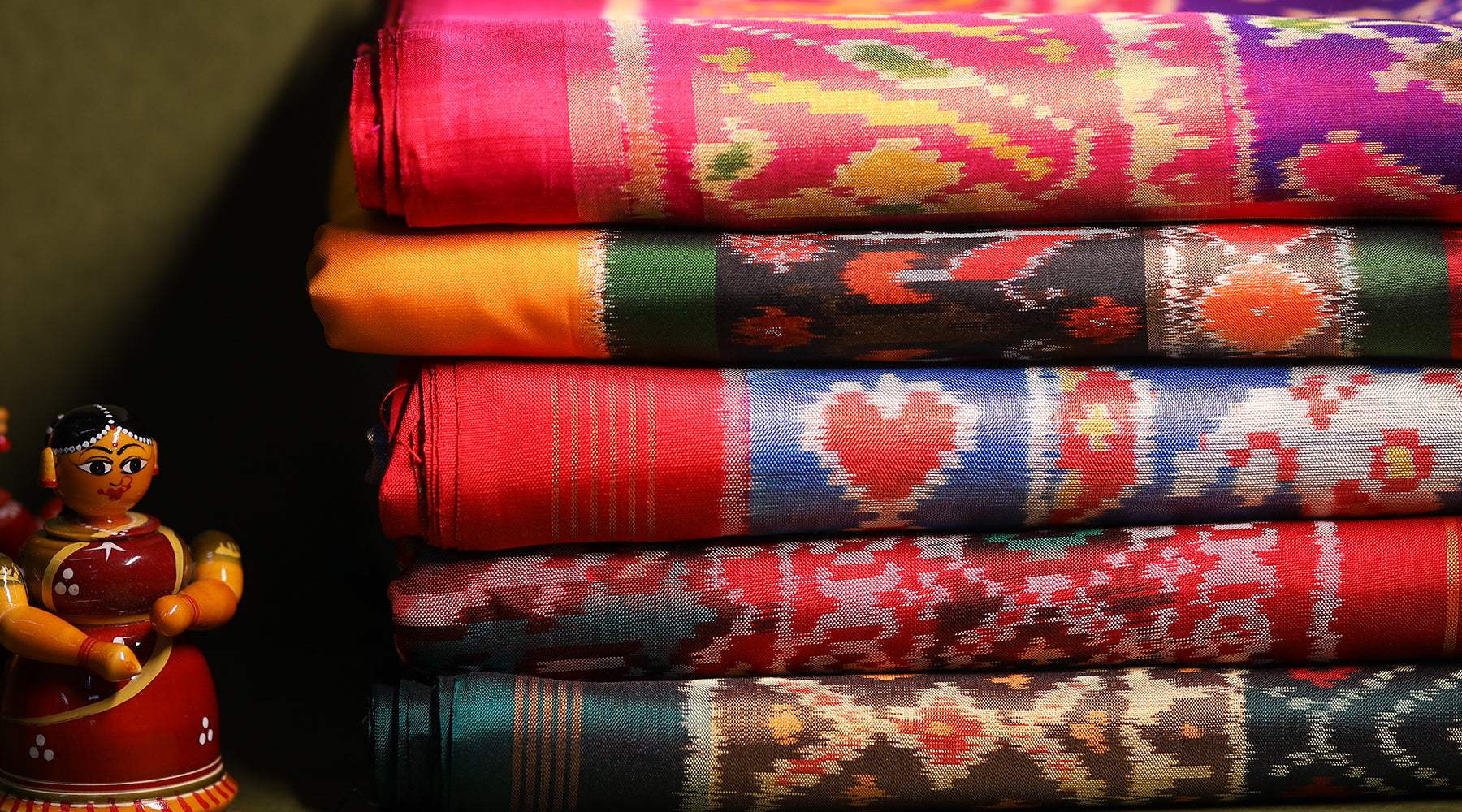
Art is from nowhere but belongs everywhere is an understatement in the world of Ikat. The art of creating a technique that will fashion a niche for itself among the connoisseurs and also flourish in the roots of the system is a wonder by itself. Ikat is derived from the Malay word ‘Mengikat’ that roughly translates to ‘Tie’ which attributes to the grand and complex tradition of tying or binding a set of threads in order to create a pattern across the canvas.
History of Ikat Craft

Source: This majestic textile depicts a royal parade with two pairs of elephants, each carrying attendants holding fly whisks, drivers, and crowned dignitaries. The Metropolitan Museum of Art.
There isn’t a technique in the modern textile world that is as ancient and relevant at the same time as Ikat. The origin of this craft is varied and doesn’t attach to one particular region in the world. The craft has thrived as a bystander of the trading practises and thus, has travelled the world along the famous trade routes. It was even used as currency in the Silk Road. The craft, although distinctly associated with Indonesia, no historian has been able to ascertain the exact location of origin for this craft. It has evolved and flourished all over the world.
Weaving of Ikat Saree

Source: Warping of the dyed yarns before weaving of the Ikat saree. Matterprints.
There are two different types of Ikat, Single and Double. The Single Ikat method is where either only the Warp or the Weft is tied and dyed with different colours so as to create patterns. The second and the advanced method is Double Ikat where both the warp and weft yarns are resist-dyed, making the weaving process complex and grand. The Double Ikat is woven only in three countries: India, Japan and Indonesia.
Types of Ikat Silk Sarees
A beautiful Ikat fresco is seen in the Ajanta caves, Maharashtra which dates back to the 7th Century CE. Throughout the ages, the Indian weavers have defined and reinvented the process suiting the modern sensibilities.
Pochampally Ikat
Andhra Pradesh is famous for Pochampally Ikats which were one of the first to receive the GI status from the traditional craft sector and another type of indigenous Double Ikat is Telia Rumal which was originally woven for headgear of the Arab travellers. As the name suggests, the yarns are treated with Oil (Tel) before weaving. The Telias are distinct red, black and white colored with diamond and flower patterns. The craft had seen a major decline in the late 90’s and has in the recent time picked pace due to the unflinching support from handloom lovers and collectors.
Ikat from Orissa- Sambalpuri
Ikat from Odisha called Bandhas are visualised and inspired from Lord Vishnu’s symbolic forms. Motifs predominantly used are Elephants, Lotus, Fish and Rudraksha. The bright colors and invigorating elements of earth make Odisha Ikat unique and mesmerising.
Patola from Gujarat

Source: Patola weaving on the loom. Flextiles on Wordpress.
Ikat from Gujarat is the famous ‘Patola - Queen of Silks’ .The geometric patterns and flaming colours are distinctive characteristics of the Patola. In terms of colour and motifs, these are similar to Odisha Ikat. Patolas are further categorised into Patan Double Ikat and Rajkot Single Ikat Patolas that boast of the exquisite traditional designs.
Modernization of Ikat

In recent years, one can find Ikat being adapted and modernised by designers all over the world. The colour palette has evolved, designs remain true to the land and the fabric has moved from the humble six yard story to adding oomph and subtle glamour to all possible textile products. Fashion icons have picked the craft and reinstated it into the high end fashion scene, thus creating a whirlwind of change to the craft. American artist turned designer, Madeline Weinrib once stated. ‘Ikat is not a print, it’s an heirloom”.
Explore our Rangmayi collection, that showcases the heirloom Patan Patola Sarees.
